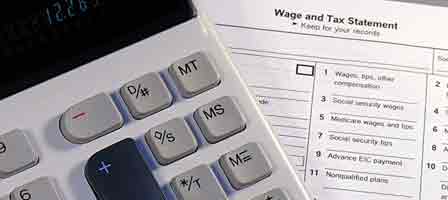DRIVING FOR UBER OR OTHERS? YOUR TAX SITUATION IS UNIQUE
Article Highlights:
- 1099-K
- Schedule C
- Uber and Credit Card Fees
- Record Keeping
- Vehicle Expense Options
- Home Office
- Other Options
With tax time approaching, if you drive for Uber, Lyft or a competitor, here is some tax information related to reporting your income. You are considered self-employed and will report your income and deductible expenses on IRS Schedule C to arrive at your taxable income for income tax and self-employment tax.
Your driving income will be reported on IRS information Form 1099-K, which reflects the entire amount for your fares charged on credit cards through the Uber reporting system. So if the 1099-K includes the total charges, then it also includes the Uber fee and credit card fees, both of which are deductible by you on your Schedule C. To determine the amount of those fees, you must first add up all the direct deposits made by Uber to your bank account. Then subtract the total deposits from the amount on the 1099-K; the result will be the total of the Uber fees and credit card processing fees. If you drive for multiple services, you will have multiple 1099-Ks and deposits from multiple services. It is highly recommended that you keep copies of your bank statements for the year so you can verify deposits in case of an IRS audit.
You will also need to include in your income any cash tips you received that were not charged through Uber. You should keep a notebook in your vehicle where you can record your cash tips. Having a contemporaneously maintained tip logbook is important in case of an audit.
Your largest deduction on your Schedule C will be your vehicle expenses. The first step in determining the deduction for the business use of a vehicle is to determine the total miles the vehicle was driven, and then, of the total miles, the number of deductible business miles and non-deductible personal miles. Recording the vehicle’s odometer reading at the beginning of the year and again at year-end will give you the information needed to figure total miles driven during the year. Although the Uber reporting system provides you with the total fare miles, it does not include miles between fares, which are also deductible. Thus it is important that you maintain a daily log of the miles driven from the beginning of your driving shift to the end of the shift. The total of the shift miles driven will be your business miles for the year. If you know the business miles driven and total miles driven, you can determine the percentage of vehicle use for business, which is used to determine what portion of the vehicle expenses are deductible.
You may use the actual expense method or an optional mileage method to determine your deduction for the use of the vehicle. If you choose the actual expense method in the first year you use the vehicle for business, you cannot switch to the optional mileage method in a later year. On the other hand, if you choose the optional mileage rate in the first year, you are allowed to switch between methods in future years, but your write-off for vehicle depreciation is limited to the straight line method rather than an accelerated method. For 2017, the optional mileage rate is 53.5 cents per mile. The IRS generally only adjusts the rate annually. If using the optional mileage rate, you need not track the actual vehicle expenses (but you still need to track the mileage).
The actual expense method includes deducting the business cost of gas, oil, lubrication, maintenance and repairs, vehicle registration fees, insurance, interest on the loan used to purchase the vehicle, state and local property taxes, and depreciation (or lease payments if the vehicle is leased). The business cost is the total of all these items multiplied by the business use percentage. Since the vehicle is being used to transport persons for hire, it is not subject to rules that generally limit depreciation of business autos, allowing for substantial vehicle write-off in the first year where appropriate. However, if you converted a vehicle that was previously used only personally, the depreciation will be based upon the lower of cost or current fair market value, and no bonus depreciation will allowed unless the conversion year was the same year as the purchase year.
Other deductions would include cell phone service, liability insurance and perks for your fares, such as bottled water and snacks. Depending on your circumstances, you may qualify for a business use of the home (home office) deduction. However, to qualify, the home office must be used exclusively in a taxpayer’s trade or business on a regular, continuing basis. A taxpayer must be able to provide sufficient evidence to show that the use is regular. Exclusive use means there can be no personal use (other than de minimis) at any time during the tax year. The office must also be the driver’s principal place of business.
Uber provides its drivers with detailed accounting information, and the only significant additional record keeping required is the miles traveled between fares, which is accomplished while in the vehicle. So justifying a home office is problematic. Even a portion of the garage where the vehicle is parked could qualify, but the use must be exclusive, which means the vehicle must be used 100% for business.
As a self-employed individual, you also have the ability to contribute to a deductible self-employed retirement plan or an IRA. Also, being self-employed gives you the option to deduct your health insurance without itemizing your deductions. However, these tax benefits may be limited or not allowed if you are also employed and participate in your employer’s retirement plan or if your employer pays for 50% or more of your health insurance coverage.
If you have additional questions about reporting your income and expenses, or the vehicle deduction options, please give this office a call.








Leave a Reply
Want to join the discussion?Feel free to contribute!